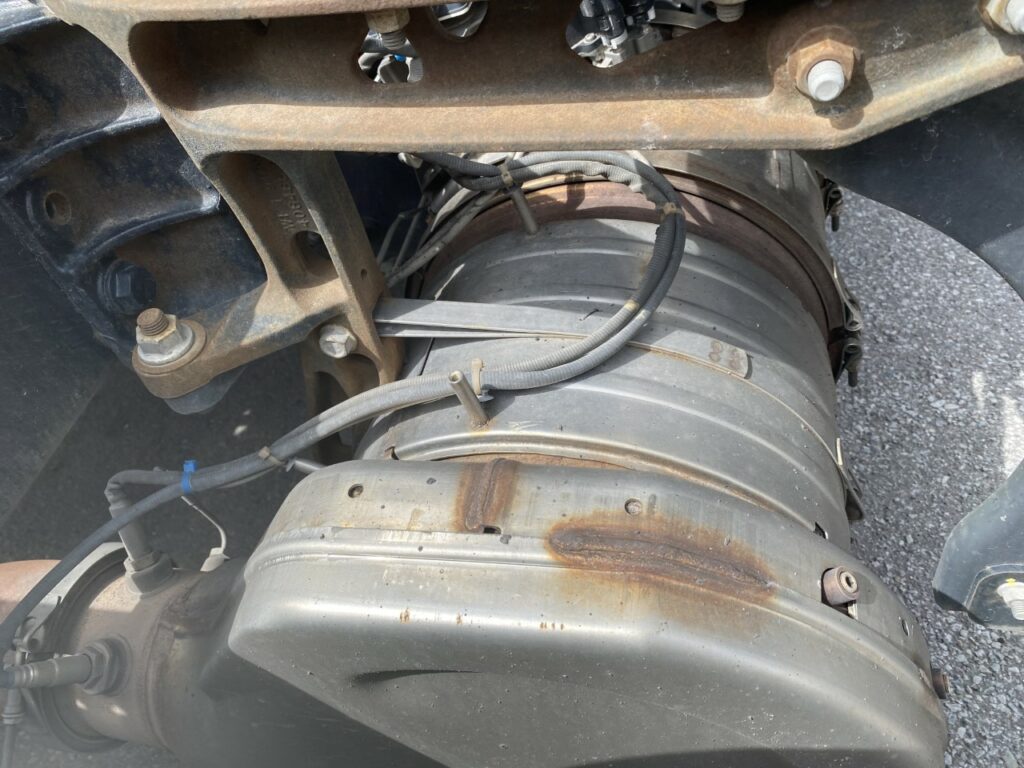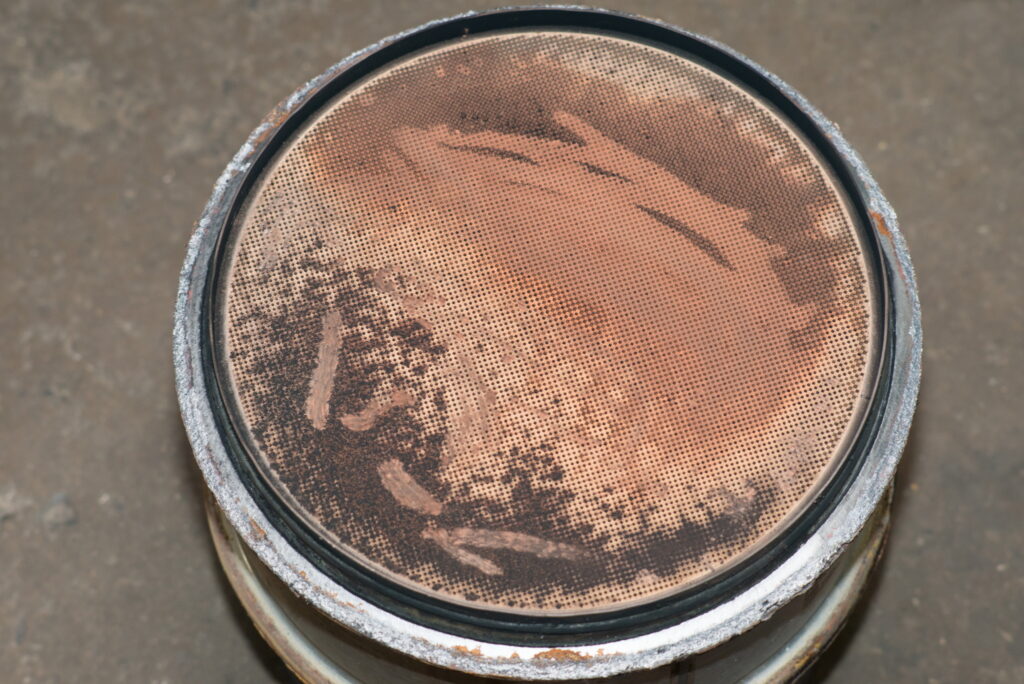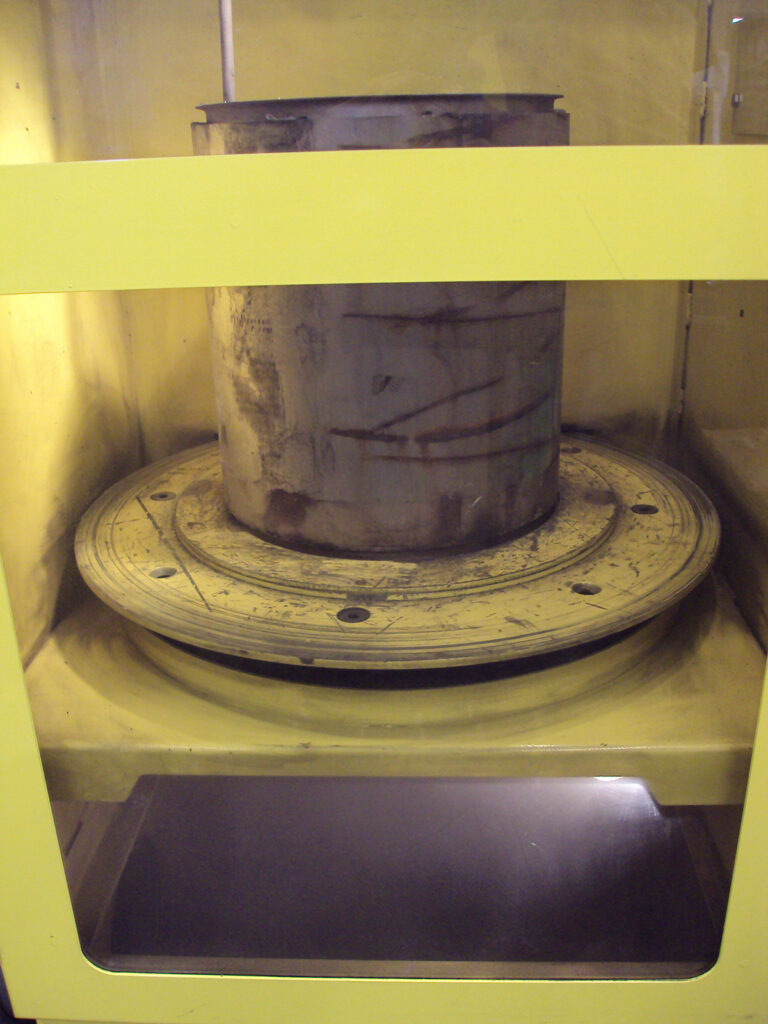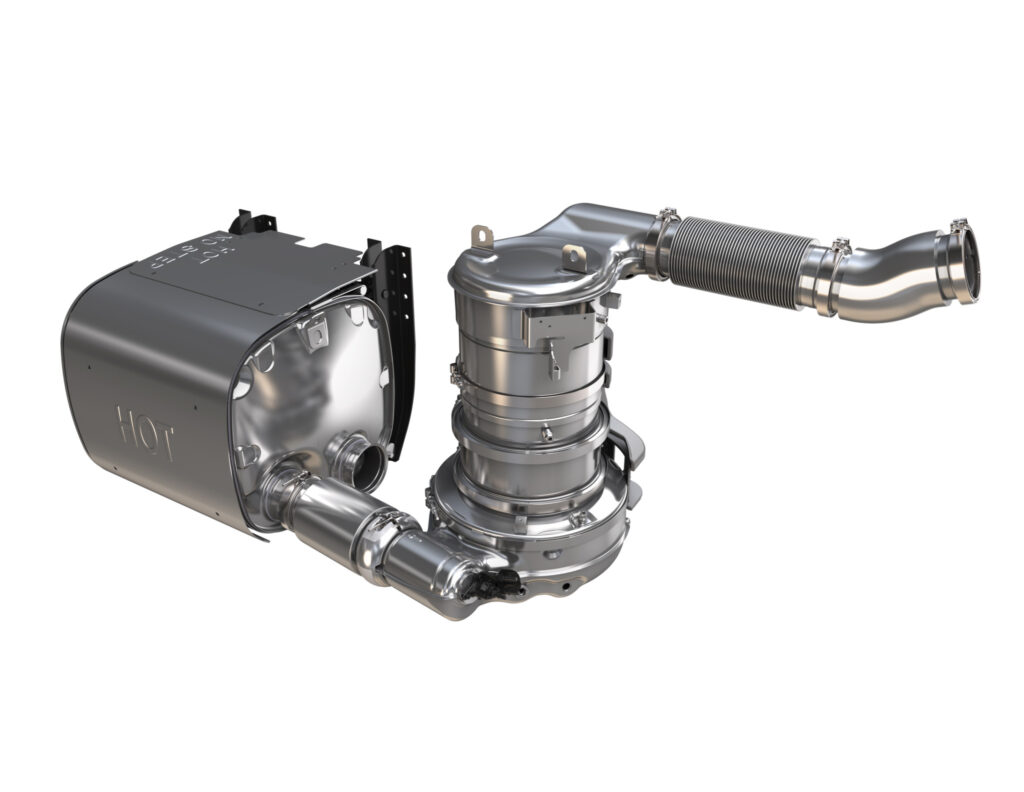Respect your DPF, and keep it clean
Diesel particulate filters could be considered the Rodney Dangerfield of truck components. They get no respect — at least, not the respect they arguably deserve. Black smoke that once spewed from exhaust stacks is largely a thing of the past thanks to these devices that stand guard against particulate matter.

“The DPF, to some extent, has had a little bit of a bad rap,” offers Johan Agebrand, director – product marketing at Volvo Trucks North America. Many of the earliest failures had more to do with limited supplies of ultra-low-sulfur diesel, he adds, referring to the fuel change that emerged with the aftertreatment systems in 2007. Filter-fouling sulfur levels are now a distant memory.
But there’s only so much a well-engineered ash can can do. Even today.
Most maintenance headaches are linked in some way to the underlying “regeneration” process that reduces soot, oil, fuel from failed injectors, or leaking coolant into the ash laden with nothing but oil additives and wear metals.
A heavily loaded over-the-road engine generates much of the heat needed for the “passive regens”, requiring drivers to take little action. But lighter loads, extra idling, excessive horsepower, or heavy stop-and-go traffic will typically require parked trucks and more of the “active regens” to tackle the contaminants.
“Everything burns,” Agebrand says. “It’s just a question of temperature.”

Bring the heat
Indeed, there is no substitute for this all-important engine heat. Even coolant heaters and pre-heaters that help to crank engines in frigid temperatures will fall short of DPF needs.
“You’re looking at 250-300 degrees Celsius [480-570 Fahrenheit] for this regen operation,” Agebrand says. “Even when we call an engine hot, it’s many times not hot enough for a DPF … It’s a lot of heat, and really the only way Class 8 engines get there is you need about a 50% workload or more for some extended period of time, like 30 minutes or more.”
Ignore the warning lights that call for the added heat, no matter the truck’s application, and the back pressure begins to climb. And once the filter becomes too restricted with anything – the unaddressed soot, or even the resulting ash – the engine will de-rate, leaving drivers with just enough power to limp off the road.
Sustained back pressures can lead to several issues, too. “This will cause accelerated wear on the turbo seals [and] valves,” says Ralph Deayton, operations manager at the DPF Company, which cleans and restores such filters.
Restricted exhaust flows can shift a filter’s substrate or lead to a crack or outright break in the material, adds Cory Just, Navistar’s director – dealer field service.
An active regen’s high heats can even create problems of another sort, as the otherwise fluffy ash sinters and fuses into ever-tougher blocks that are difficult to clear away.
Addressing excessive regens
If the regen activity seems excessive, it’s time to look upstream for the root cause of the problems, such as oil leaking from the piston rings, or other leaks in the combustion chamber, Agebrand says.
“We see oil leaks poisoning and deactivating the precious metal coatings,” Deayton agrees, referring to the upstream issues. This affects how well the diesel oxidation catalyst will convert gases, as well as the DPF’s ability to regenerate the soot into ash. The end result is more active regens.
“Loose exhaust clamps create the highest frequency of active regens. Coolant leaks, oil leaks, failed injectors, and dirty intake air can create aftertreatment issues,” says Ray Hasting, Mack Trucks’ director – e-mobility and national vocational accounts. But when that happens, the DPF is likely lower on the list of concern than a coming engine overhaul.
“[An aging] engine’s aftertreatment system may be unable to properly manage the engine’s drop in performance. If the piston rings, valves, injectors, turbo, EGR system, charge air cooler get too far outside of their designed operating specifications, the DPF and other aftertreatment components may be wrongfully identified as ineffective when the issue is upstream.”
“DPF failures are usually a victim part, where the primary failure is another component on the engine or vehicle,” Just adds. Some of the more common failures here include internal coolant leaks, leaks in the air intake or exhaust, added oil consumption, or the misfires and poor performance that failed injectors can cause.
They aren’t the only leaks that can cause issues. A leaking gasket in the exhaust manifold, for example, can limit the heat needed to support passive regens.

Cleaning a DPF
No matter what the root cause may be, a restricted DPF will need to be replaced or cleaned.
“DPFs have been on commercial truck engines since 2007 and there has been a lot of discussion about regeneration, but I think many customers are misinterpreting ‘regen’ for ‘cleaning,’” Hasting says.
“Doing a regen more often in an effort to avoid ‘cleaning’ of the DPF has more of an opportunity to cause DPF damage than not doing a regen,” he adds. “Doing back-to-back forced regens to get the DPF differential pressure to below its derate threshold risks creating too much exhaust back pressure on the DPF and can cause the DPF catalyst to crack or push out.”
There are also specific procedures to follow when the cleaning itself is completed. Agebrand refers to the online videos that shows people trying to clear the filters with a simple high-pressure wash. What they’re actually doing is damaging the filter and unwittingly introducing new contaminants.
“You can ruin everything very fast if you’re not adhering to the maintenance requirements.”
The proper methods typically fall into one of two camps – an aqueous solution, or a “blast and bake” method. In the latter case, purpose-built cleaners raise the filter temperatures to oxidize any remaining contaminants. Once that step is completed, jets of high-pressure air are used to clear away any ash. If any ash remains, back into the oven it goes.
There are upward limits for the heats and pressure used for the process, Agebrand says. “Heat expands material and then it needs to contract, and it needs to do that without cracking, without being hardened or forged … That is a key item. Not all manufacturers might have the exact same materials.”
Daimler Trucks North America, for example, requires a liquid-based wash as part of its reman program.
Once the required cleaning processes are completed, final inspections include running wires down individual channels, but also ultrasonic tests to look for any cracks. Visual checks are combined with flow tests, pin tests, and light tests to ensure the filter is good to go.
“The filter is never back to the original standard when new,” Just stresses. “The full life expectancy of a DPF in certain applications in not an exact science.”
But truck owners have reported better fuel economy and engine performance once the cleanings are done, he says.

How often should I clean a DPF?
The question then, is whether it makes sense to proactively clean a filter ahead of schedule.
“Unfortunately, it is accepted practice in the industry that you wait until you get warning lights on the dashboard before servicing the DPF,” Deayton says. His company recommends a closer review of work cycles, and scheduling cleanings into a truck’s preventive maintenance schedule.
“I think there is a real opportunity to extend the life and effectiveness of the DPF through DPF ‘cleaning,’” Hasting says. But fleets looking to determine a return on investment will need to be aware of changes in upstream engine performance, regen frequency, operational changes, and faults linked to the engine and aftertreatment system.
There’s also a risk specific to the filter.
“There is some kind of forging that will always occur,” Agebrand says of the baking process. That opens a path for cracks.
Complete an exhaustive inspection
In the meantime, there is always room for careful inspections to extend DPF life.
“A proper aftertreatment maintenance program goes beyond the cleaning,” Just says, referring to the need to thoroughly inspect the entire air intake and exhaust systems. Look for leaks at clamps, joints, hoses, and pipes running from the air filter to the exhaust outlet.
“Leaks at any point of the air management system will lead to improper and inefficient operation, and could cause premature filling of the DPF with soot.”
Frustrated by the entire process, some truck owners have turned to shops that are willing to cut the filter right out of the exhaust system. Such “delete kits” are patently illegal, of course, and it will be mighty hard to re-sell the trucks once the change is made.
It’s better to add to the maintenance regime than delete a component that was installed for a good reason.
You can breathe a little easier when you do that.
Have your say
This is a moderated forum. Comments will no longer be published unless they are accompanied by a first and last name and a verifiable email address. (Today's Trucking will not publish or share the email address.) Profane language and content deemed to be libelous, racist, or threatening in nature will not be published under any circumstances.
They cost the industry more carbon footprint by all the extra time and the new engines use more fuel more Def and in the end if we are truly interested in cleaning up the environment Make the other countries accountable for their emissions until that happens we are putting a Political band aid on the problem
-
Right but we gotta wave that virtue flag to make our egos feel better.
The DPF is in theory not even needed. Here in the U.S. we utilize EGR to lower combustion NOX emission s which produces soot. Soot is the entire purpose of the DPF. Then heat the soot to turn it to ash which creates nox and then we use SCR to eliminate nox. What we should be doing is eliminating EGR which will give us less particulate (soot) and higher combustion temps which directly relates to increased power and economy and then simply treat the Nox emissions with SCR to reduce them to nitrogen and water.
Gotta say, whole lot of word salad with little value! Guess I will just follow Cummins manual.
Really informative article, you brought to light many of the ways a DPF can prematurely clog up. But to properly clean them you first need to heat treat them in a furnace or kiln to turn all the contaminants and particle matter to ash. This heating cycle is much longer than you could easily do during normal regeneration. The advantage is the newly created ash is much easier to blow out with compressed air. Also by testing the DPF before and after cleaning with a differential air pressure gauge you can tell how well the DPF has been cleaned and be able to say with confidence that it is as good as new